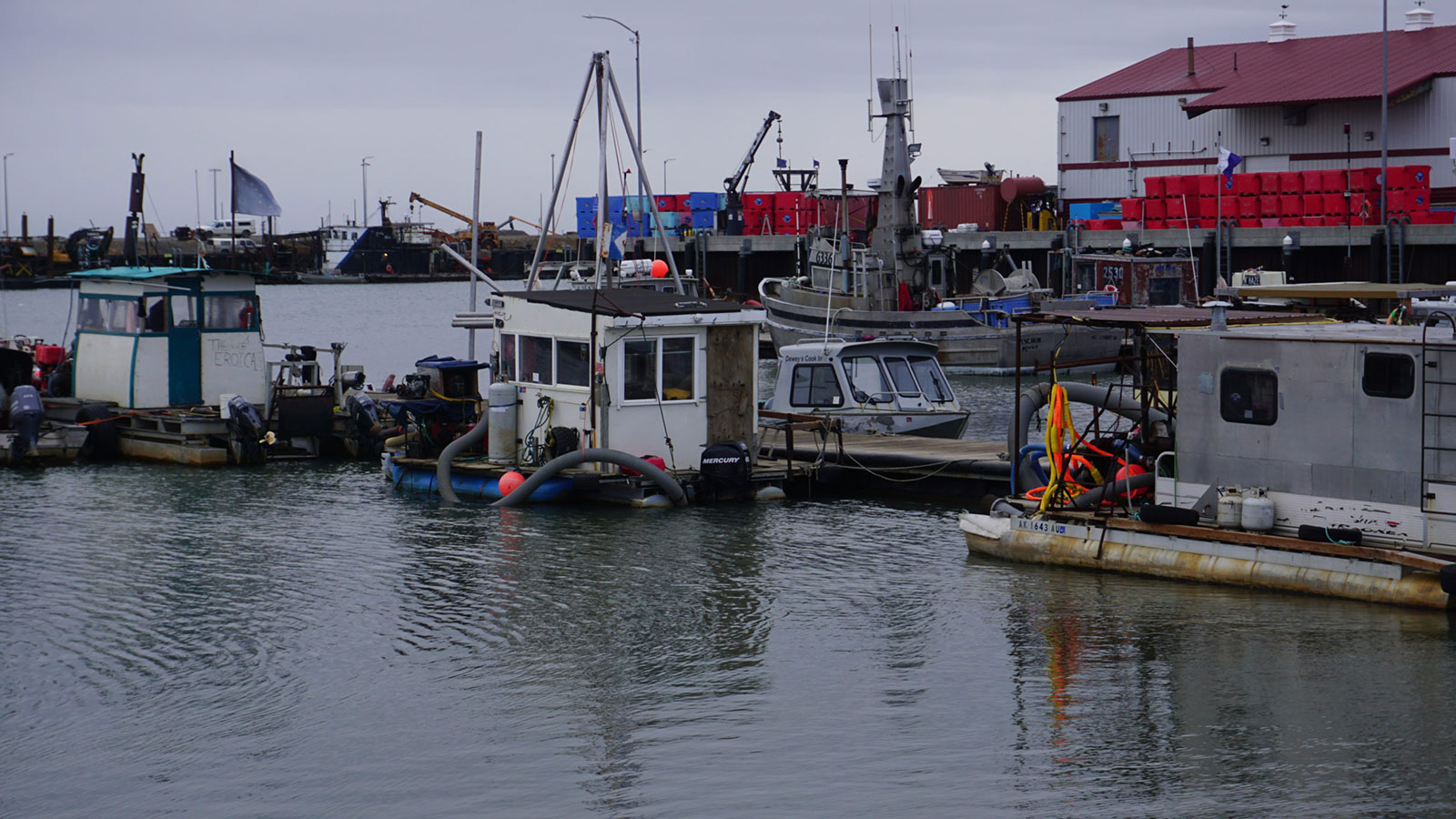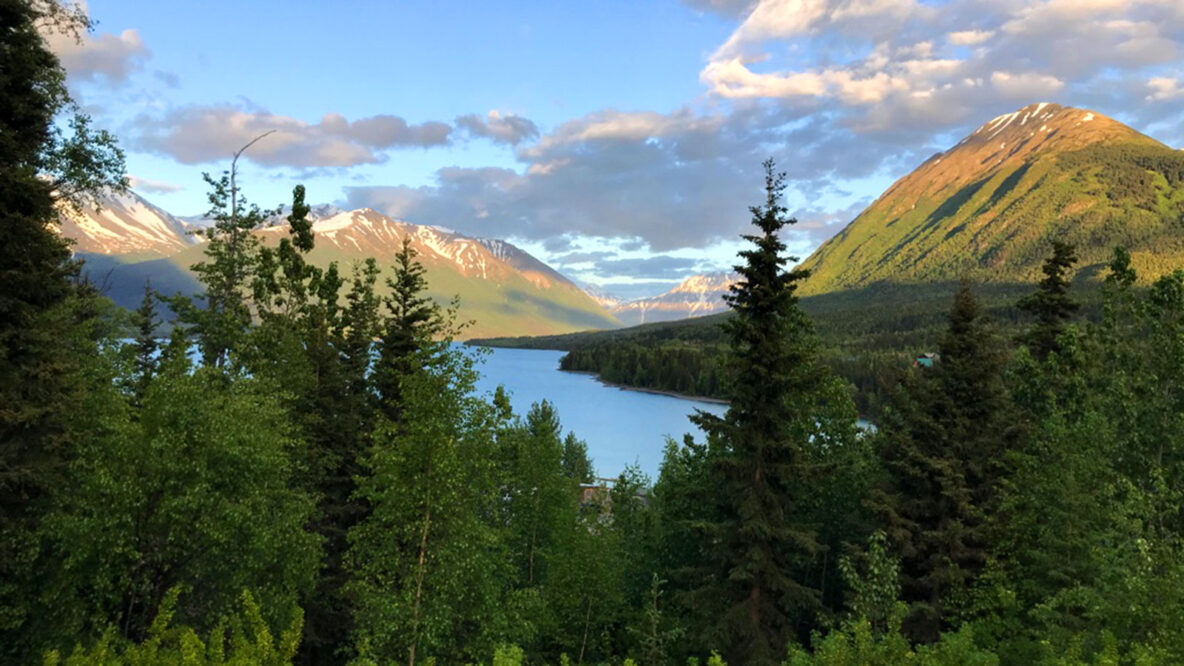Getting access to local news and information can be challenging in Alaska, where most of the state’s 350 communities are not connected by roads. So in 2019, the Atwood Foundation, which has deep roots in local news, partnered with the local community foundation to create the Alaska Center for Excellence in Journalism. Its mission is to fund in-depth reporting projects and professional development opportunities for reporters in a state desperately seeking to keep its journalists working in the field.
Since then, with center funding, reporters have explored the Alaskan system for Native land ownership, sexual assault and teen mental health in rural communities and pandemic healthcare in small towns, among other issues.

Kortnie Horazdovsky (left) & Ira Perman (right)
Now, the Atwood Foundation is leading the Alaska chapter of Press Forward Locals, as it seeks to expand support for local journalism and to learn from other communities on the same path. We sat down with Ira Perman, the Atwood Foundation’s executive director, and Kortnie Horazdovsky, ACEJ’s director, about their work in the state, and their plans for Press Forward Alaska.
As such a rural community, how are information needs currently being met in Alaska?
Perman: Alaska is a big, big place, and the communities are very small. We have about 350 communities, most of which are not connected by road. The smaller ones are often on the coasts or on rivers. And the only way to get into them is either by boat or by plane.
As far as the media goes, there’s a great deal of variety of how well they are served – or not. The big cities like Anchorage are pretty well served, relatively speaking. Once you get outside of Anchorage, it changes dramatically. The smaller communities, the ones that are like 2,000 to 10,000 people might have a newspaper – or might have had a newspaper.
What we do have fairly well developed is a public broadcast system. A few of the larger communities rebroadcast to the smaller ones. It’s very limited, particularly in those smaller places, and it’s not getting any better.
The center launched in 2019. You’ve focused on funding in-depth reporting and professional development. Why?
Horazdovsky: It’s a big struggle in Alaska to get reporters to stay here long enough to really get their feet under them, and to know the issues in and out, particularly in rural Alaska where a lot of times it’s new, young journalists who are here for two years and then someone else new comes in.
We chose professional development as a way to keep more journalists in Alaska, and to give them the knowledge they need to cover the state. Whether it’s climate change, federal budget funding, the military, indigenous tribal issues – we have lots of big issues to cover. So we want to train journalists to cover those things all across the state.
One of your projects enables more reporters to cover the State Legislature. How does that program work?
Horazdovsky: Over the last few years, the number of outlets that have a dedicated Capitol reporter has dwindled. The capital is not accessible by the road system, so it’s extremely expensive to send a reporter to Juneau.
Basically, the goal is to give mid-career journalists a chance to report on the Capitol on their community’s issues, with a seasoned legislative editor as a mentor. And they are backfilled at home by a student journalist. So it’s kind of a double professional development.
A few years ago, one of the student reporters spent some time out in Bethel, Alaska, and decided she loved reporting in rural Alaska so much, she became a full time reporter in Kotzebue, which is above the Arctic Circle. That was a big success for us.

Photo credit Yereth Rosen | Actic Today
How does being part of Press Forward change your work?
Perman: We were just finally getting to the point where we could really start looking beyond the Atwood Foundation to grow support for this program. And along came this opportunity.
Horazdovsky: My background is in news. I was in a TV newsroom for 12 years. I was born and raised in Alaska, and I’ve also been on the board of the Alaska Press Club, which is one of our partners. And so I’m new to fundraising and nonprofit land. And I was like, I just need to learn more about how other people do this. Then Press Forward came along, and I’ve described it a couple times as, “the boat we didn’t want to miss that showed up early with a ticket to get on. It was exactly what we needed.”
If your Press Forward chapter is wildly successful in 2024, what happens?
Perman: We really see this as a long term effort. We’re talking about large, institutional donors, and you want to have them making regular gifts or large gifts, which they’re going to have to spread out over time. So we’re looking at anywhere from a five to 10 year horizon to get not only annual support, but build up a fund kind of like the national Press Forward is doing.
There’s a lot of need in Alaska. We’re not going to get it all sorted out and covered in the next year with a Press Forward partnership. But I think that this partnership is setting the stage for bringing all those connections to the right place at the right time for our organization.
To learn more about Press Forward Locals, and how to start a chapter, visit pressforward.news/locals/

